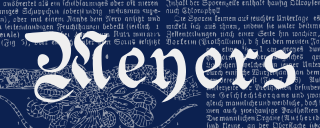
Meyers Konversations-Lexikon or Meyers Lexikon was a major encyclopedia in the German language that existed in various editions, and by several titles, from 1839 to 1984, when it merged with the Brockhaus Enzyklopädie.

The Brockhaus Enzyklopädie is a German-language encyclopedia which until 2009 was published by the F. A. Brockhaus printing house.

Friedrich Arnold Brockhaus was a German encyclopedia publisher and editor, famed for publishing the Conversations-Lexikon, which is now published as the Brockhaus encyclopedia.

The Lot was a unit of measurement of mass, which was mainly used in German-speaking states of the Holy Roman Empire and in Scandinavia.
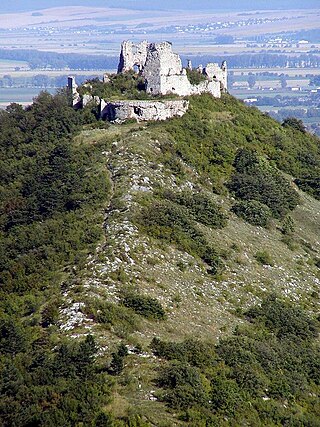
Turňa nad Bodvou is a village and municipality in Košice-okolie District in the Kosice Region of eastern Slovakia.

Karl Wilhelm Hübner was a German landscape and genre painter, in the Romantic style.

Friedrich Wilhelm Marpurg was a German music critic, music theorist and composer. He was friendly and active with many figures of the Enlightenment of the 18th century.

Hermann Brockhaus was a German Orientalist born in Amsterdam. He was a leading authority on Sanskrit and Persian languages. He was the son of publisher Friedrich Arnold Brockhaus and brother-in-law to composer Richard Wagner. In 1870 he received a combined medal (together with in occasion of the 25th anniversary of the DMG.
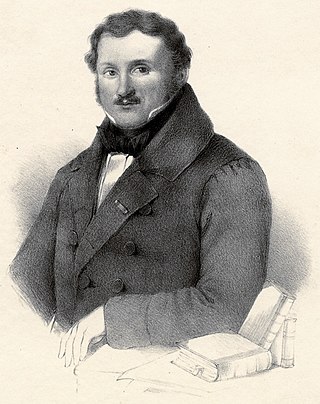
Heinrich August Pierer was a German officer, lexicographer and publisher known particularly for his Universal-Lexikon der Gegenwart und Vergangenheit, a multi-volume encyclopedic dictionary first published in 1824 as Encyclopädisches Wörterbuch der Wissenschaften, Künste und Gewerbe. Bearbeitet von mehreren Gelehrten ; it is considered "the first full-fledged modern general lexicon".
Joseph Johann Baptist Andreas von Zerboni di Sposetti was a German philosopher.

Marianne Antonia Kirchgessner, also Mariana Kirchgessner, Kirchgäßner,, was a German glass harmonica player. She was blind from eye disease caused by smallpox when she was four years old. Kirchgessner's artistic qualities brought her the attention of great composers such as Muzio Clementi, Johann Gottlieb Naumann, Johann Friedrich Fasch, Johann Friedrich Reichardt and Franz Anton Hoffmeister.
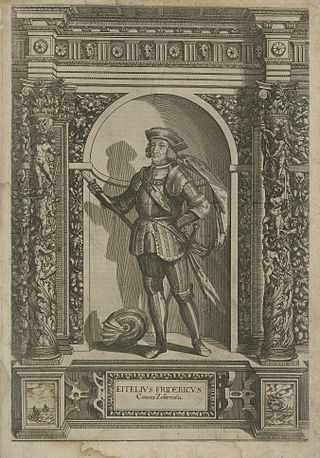
Count Eitel Friedrich IV of Hohenzollern was the founder and first Count of the line Hohenzollern-Hechingen as Eitel Friedrich I.

Franz Anton, Count of Hohenzollern-Haigerloch, was a reigning Count of Hohenzollern-Haigerloch.
Karl Friedrich Vollrath Hoffmann was a German geographer.

Friedrich Christian August Hasse was a German historian. He was the father of pathologist Karl Ewald Hasse (1810–1902).

Ferdinand Geminian Wanker was a German Roman Catholic moral theologian.

Eduard Wunder (1800–1869) was a German philologist, and from 1843 to 1866 Rector of the Fürstenschule Grimma in Saxony.

Carl Wilhelm Kolbe was a German etcher, graphic artist and author. He was generally referred to as The Elder to distinguish him from his nephew; a painter who was also named Carl Wilhelm Kolbe.

The Roter Seufzer, also called the Seufzer and Leipziger Seufzer, was the popular name of the inferior six-pfennig coin minted in huge quantities in 1701 and 1702 by the Prince-Elector of Saxony and King of Poland, Augustus the Strong (1694–1733). The name of these coins was due to the loss that the population suffered as a result of the coins which had a high copper content.
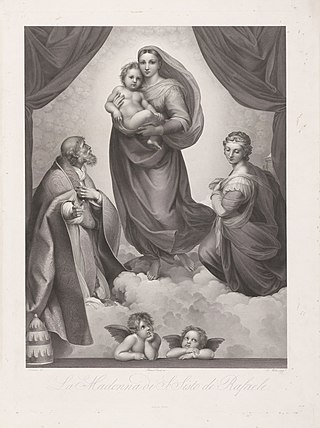
Apollonia Seydelmann, née De Forgue was a German-Italian miniaturist.


















